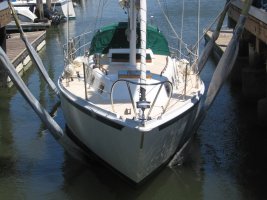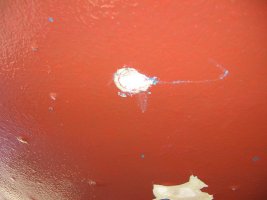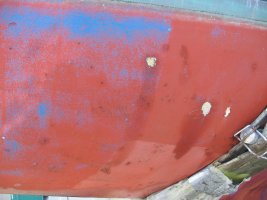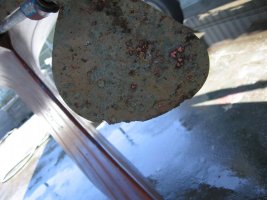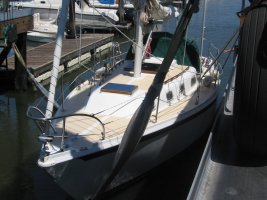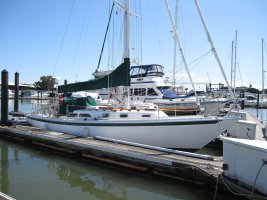Hi all,
I've sold my beloved E27, Symbiosis, and moving up (hopefully soon) to an E35-2. We hauled the E35-2 today and found that the port side had blisters below the water line. Blisters don't scare me terribly much, but it's these that have me scratching my head a little: They're underneath the bottom paint only, not the gel coat.
As we examined this a little more closely, we found that the blisters were easily popped, and many were popped simply by pressure washing the hull. It was definitely just skin deep. As we dug into one of them more, we found that the blisters were behind (in this order) two layers of bottom paint, a layer of what looked like primer, and another layer of bottom paint after that. Is this typical of paint jobs?
Even more bizarre is that the blisters were only on the port side, which doesn't get much sun where she's been berthed for the last 4 years.
Any thoughts on this (the prior paint jobs and the fact that the blisters are only on one side)?
Another strange thing: there were no zincs. So the prop was pretty shot. The stainless steel shaft still looked good, though it was still the 3/4 inch shaft.
Thoughts welcome!
I've sold my beloved E27, Symbiosis, and moving up (hopefully soon) to an E35-2. We hauled the E35-2 today and found that the port side had blisters below the water line. Blisters don't scare me terribly much, but it's these that have me scratching my head a little: They're underneath the bottom paint only, not the gel coat.
As we examined this a little more closely, we found that the blisters were easily popped, and many were popped simply by pressure washing the hull. It was definitely just skin deep. As we dug into one of them more, we found that the blisters were behind (in this order) two layers of bottom paint, a layer of what looked like primer, and another layer of bottom paint after that. Is this typical of paint jobs?
Even more bizarre is that the blisters were only on the port side, which doesn't get much sun where she's been berthed for the last 4 years.
Any thoughts on this (the prior paint jobs and the fact that the blisters are only on one side)?
Another strange thing: there were no zincs. So the prop was pretty shot. The stainless steel shaft still looked good, though it was still the 3/4 inch shaft.
Thoughts welcome!

